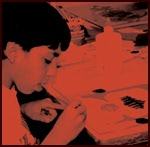|
Program planning helps you determine how to develop a youth arts program, how to expand an existing program, or even review whether you should continue to provide a program.
The planning model
A planning model helps you define all of the necessary steps involved in designing, running, and evaluating an arts program. It is effective because it helps program planners articulate desired outcomes of their program clearly and succinctly. This section will help you evaluate program resources, plan program activities, immediate outcomes, long-term outcomes.
Risk and protective factors
This section looks at the many risk and protective factors that affect youth development including community, family, school, consistent standards of behavior, mentors, and more.
Forming a collaboration
Successful programs involve a collaborative effort. This section includes strategies for sustainable partnerships, how to define the goals of the collaboration, how to build understanding and trust, and how to coordinate a collaboration.
Defining program goals
This section includes questions to ask that will help you how to identify the conditions that your program will address and the outcomes it will achieve.
Selecting youth
The case studies in this section illustrate the different challenges and benefits of working with distinct populations of youth at risk.
Determining program activities
This section includes step-by-step information that will help you select an art form; determine staff-to-participant ratios; determine program frequency and duration; determine appropriate levels of family involvement; plan public exhibitions, performances, and sales; and more.
Running your program
This section includes practical information about inviting youth and conflict management as well as release and consent forms.
More Resources

| 


